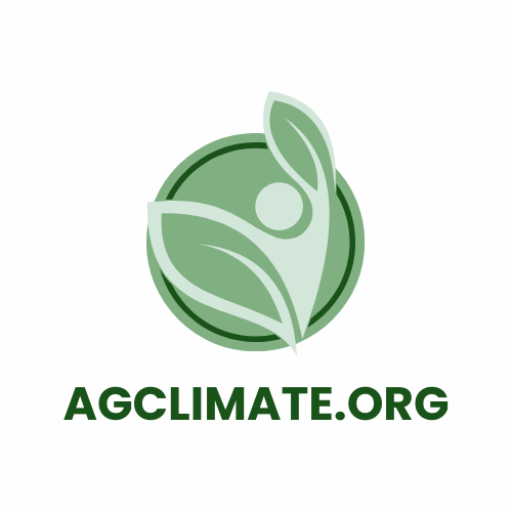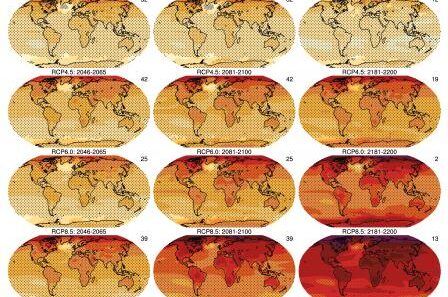In recent decades, climate change has emerged as one of the foremost challenges of our time. With rising temperatures, melting ice caps, and erratic weather patterns, many people are left contemplating the culprits behind these changes. But what if we told you that the main contributors to climate change are often not what you might expect? Let’s delve into the myriad factors that significantly affect our planet’s climate, unveiling both the well-known and the surprising contributors that warrant our attention.
To embark on this inquiry, consider this playful question: What if your morning cup of coffee is more than just a caffeine fix but actually a tiny piece of a much larger climate puzzle? Coffee production, like many other agricultural practices, has broad implications for environmental stability, yet it’s often overlooked in the broader discussions of climate change. Agricultural practices are just the tip of the iceberg—let’s navigate through the depths together.
The first major factor to consider is greenhouse gas emissions. These gases, particularly carbon dioxide (CO2), methane (CH4), and nitrous oxide (N2O), trap heat in the Earth’s atmosphere and are primarily produced by human activities. Fossil fuel combustion for electricity and heat is the most significant source, accounting for over 70% of global emissions. However, industries such as agriculture, waste management, and land-use changes contribute dramatically as well. Agriculture alone accounts for nearly 10-12% of the total greenhouse gas emissions, stemming from practices like enteric fermentation in livestock and rice cultivation. Thus, while fossil fuels get the lion’s share of the blame, it’s vital that we acknowledge the agricultural sector’s pivotal role.
Following closely behind is deforestation. Forests act as vital carbon sinks, absorbing CO2 from the atmosphere. Their destruction for timber, agriculture, or urban development not only releases stored carbon but also diminishes the Earth’s ability to sequester future emissions. The Amazon Rainforest, often dubbed the lungs of our planet, is particularly susceptible to these pressures. The paradox lies here: as the demand for agricultural products like soy and palm oil rises, forests are cleared, further exacerbating climate change. Within this context, one must ponder: at what cost do we prioritize short-term economic gains over the long-term health of our planet?
A lesser-known but equally crucial player in climate change is transportation. While typical sources like cars and airplanes are well acknowledged, the indirect consequences of our transportation choices often evade scrutiny. The global increase in freight shipping, driven by globalization, significantly contributes to emissions. Additionally, the production and maintenance of vehicles create sprawling energy demands that lead to increased carbon footprints. If every journey signifies a carbon cost, it’s essential we reassess not just how we travel, but how we think about transportation in its entirety.
Water management, particularly in the context of agriculture, presents another surprising contributor to climate variances. Irrigation requires significant energy expenditure, contributing to CO2 emissions. Poor water management can exacerbate drought conditions, which in turn affects crop yields and necessitates increased chemical fertilizers that further contribute to climate change. This creates a vicious cycle: as water becomes scarcer, the push to harness every drop can lead to unsustainable practices, ultimately disrupting local ecosystems and contributing to increased emissions. At this juncture, one must question: can we strike a balance between agricultural viability and environmental stewardship?
Then there’s the issue of waste. Waste management practices vary widely across the globe, and improper disposal can lead to increased greenhouse gas emissions. Landfills are notorious for generating methane, a gas with a potency many times that of CO2 when it comes to trapping heat in the atmosphere. The challenge here is multidimensional; not only must we improve waste management strategies, but we also need to rethink consumption patterns. How can we foster a culture of sustainability that curbs waste generation at its roots?
Urbanization represents another surprising contributor. The rapid growth of urban areas tends to heighten energy demands due to increased transportation and infrastructure needs, leading to higher emissions. Cities often become heat islands, where urban structures absorb and retain heat, leading to increased energy use for cooling systems. Urban planning typically overlooks these dynamics, focusing on expansion rather than sustainability. The challenge lies in envisioning cities not merely as centers of commerce and culture but as integral components of climate resilience. How can urban environments transition toward sustainability, rather than mere expansion?
Lastly, let’s touch upon the less tangible factors like consumer behavior and cultural norms. The choices individuals make regarding consumption directly influence global trends. A modern consumer culture that prizes convenience often leads to excessive waste and resource depletion. The rise of fast fashion, for example, poses a significant environmental concern, with production processes generating copious emissions while contributing to water pollution and resource strain. Challenging this norm demands a cultural shift that embraces sustainability—opting for quality over quantity, moderation over excess. In doing so, how might personal accountability shape the world’s collective response to climate change?
Thus, it becomes clear that climate change is a multifaceted issue, with surprising contributors emerging from various sectors. To combat this global challenge effectively, it is crucial to understand the interconnectedness of these elements. By fostering dialogue around these factors, promoting sustainable practices, and challenging existing paradigms, we can contribute to a healthier planet. The question remains: are we prepared to take on the challenge of addressing the surprising contributors to climate change in our own lives and communities? The future of our planet may very well depend on our willingness to act.




